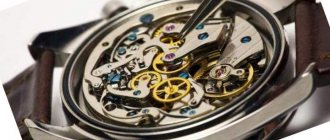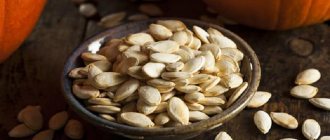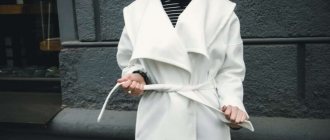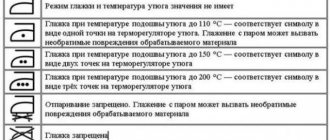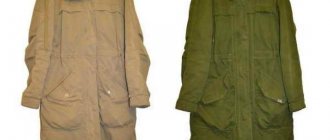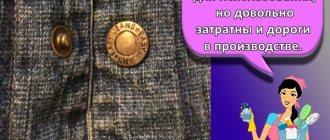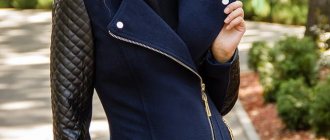Fashion and modern technology have made the coat a design item. A huge selection of artificial and natural materials from which this wardrobe item is sewn requires careful attention to the care of the product. If previously only drape fabric was used for tailoring, now the market offers models made of cashmere, leather, suede, velor, without, of course, leaving aside the classics of the genre. Any of these fabrics require specialized knowledge on how to iron a coat.
How to remove wrinkles and creases using an iron
Storing a coat for a long time without using it, especially if it hangs in a tightly packed closet, leads to the appearance of bruises, folds, and creases. In this form, the product loses its attractive appearance, and ironing becomes necessary. Before starting the process, you need to carefully study the information on how to properly iron a coat, located on the label, where the permissible temperature must be indicated. Some models are best dry cleaned.
Features of ironing at home
Is it actually possible to iron a coat? Some materials cannot be ironed in principle, but you can get rid of wrinkles at home. Suede is steamed in a vertical position - if there is no steam generator, you can do this with an iron, many of them are equipped with a “Steam boost” function. A leather coat will have to be steamed. It will take its original form if you place it in a bathroom filled with steam - after a while its surface will become smooth, all you have to do is dry it.
The quick method is not always reliable - you can iron corduroy, but only on the wrong side and on a soft surface, so as not to wrinkle the pile. The same principle applies to velor and velvet fabrics. If you run the iron along the front side, the pile will be smoothed out, and it is no longer possible to return it to its original form - the product will be hopelessly damaged. Synthetic fabrics can simply melt from hot temperatures.
Nuances of care
In conclusion, here are some tips to help you care for coats made from different types of fabric:
- Always store wool coats, especially those made from alpaca and cashmere, on hangers at home. Do not throw other things on it and even when visiting, ask for a separate hanger.
- Do not wear handbags with a long strap along with an alpaca coat to avoid creases and bald patches.
- Carefully straighten your drape coat before storing so that there are no creases on the hem, sleeves, or collar. This material is quite rough and therefore will be very difficult to smooth out.
And don’t forget that proper care of your favorite things will definitely extend their service life, and save you nerves and finances.
How do you like the article?
How to iron coats made from different types of fabric
As already mentioned, before you begin the actual ironing process, you need to familiarize yourself with the care recommendations. We are not talking about summer types of coats made of cotton fabrics. Everything is clear with them; they are stroked using standard methods. As for more serious options, for example, how to properly iron a warm coat at home, each type of textile has its own method. The use of ironing fabric is desirable in all cases, except for vertical steaming or ironing from the inside out through the lining. For ironing, you can use gauze, special fabric (sold in the same place where irons are sold), or an iron soleplate that does not leave lasses.
Note! The sleeves of any coat can only be ironed using a sleeve holder. If one is not available, a tightly rolled towel will replace it. Otherwise, the appearance of arrows is inevitable, which is completely unacceptable for a coat.
Coat made of drape or wool
Natural wool and drape are not only difficult to iron, they are also expensive, which is also a good incentive for careful treatment:
- If for some reason you have to iron without ironing, you need to stock up on a set of paper napkins to clean the soleplate of the iron, eliminating, if possible, the appearance of scorch marks.
- Such fabrics, due to their thickness, structure and properties, are difficult to iron, so the product must be slightly moistened.
- Ironing begins from the inside out, if the coat is single-layer, without lining, this will be enough, with the exception of the finishing of decorative elements (epaulets, cuffs, lapels, pockets, flaps), the inside of the pockets is turned inside out and ironed
- You need to iron the seams especially carefully using the steaming method.
- Woolen fabric may require processing on the front side, where the use of protection in the form of an iron is mandatory.
Important! During the ironing process, the iron should only be moved in one direction. If the wool or drape has a long pile, the correct care is to treat the surface with hot steam at a short distance.
Suede and corduroy product
Both options can be artificial or natural; the former react poorly to high temperatures. The problem of how to iron a coat made of such materials has a simple solution. It is best to use steaming in a vertical position. If ironing cannot be avoided, the coat is turned inside out and laid out on a softened surface - this will help avoid unsightly wrinkles in the pile.
Synthetic product
Synthetics melt very easily, so ironing should only be done at the low temperature indicated on the product label. If the tag has not been preserved, you can use the tip of the iron to try the fabric from the wrong side, where the lace or mark will not be noticeable. The use of an iron-on or oversole is also mandatory.
We recommend:
Clothes steamer - rating of the best models
Coat made of combined materials
In this case, the ironing process is divided into several stages. Each stage requires an appropriate approach, taking into account the characteristics of all types of textiles used in a particular model. The product, with or without filler, is turned inside out and ironed, then the front side is processed. Usually ironed in this order: back, front, sleeves, then decorative details made of contrasting fabric.
Attention! Sometimes it is recommended to treat the lining fabric last. The advice is fundamentally wrong - in this way, creases and folds reappear on the front side, which are much more difficult to straighten after ironing. Sometimes it is completely impossible to straighten them - no matter how you iron them, the crease lines will be visible in bright light.
We look at the label and follow the recommendations
| Material | Temperature | Recommendations |
| Drape | 140–165 °C | The fabric is difficult to iron, it is better to use steaming |
| Wool | 115–140 °C | Iron through damp cotton cloth |
| Cashmere | Ironing is prohibited | Steam treatment is allowed at a distance of 2-3 cm |
| Polyester | Silk mode | Iron with care, pressing the iron lightly |
| Gabardine | 60-85 °C | Iron from the inside out through cotton fabric |
| Synthetics | Minimum mode | Iron with a low-heat iron using light touches |
| Suede | Ironing is prohibited | Vertical steaming with an iron or steamer is allowed |
| Velveteen | up to 110 °C | Iron from the inside out. Use multi-layer lining |
How to iron a coat without an iron
The absence of an iron does not mean that the problem of how to properly steam a coat made of certain types of materials (suede, leather, velvet or velor) has no solution. Is it possible to steam such a coat? It can almost always be refreshed and smoothed by hanging it in the bathroom filled with steam. After vertical steaming, the product should dry well. Only when dry can it be placed back into the wardrobe.
Washing tips to make ironing easier
If you follow a few simple rules when washing at home, you may not have to worry about how to smooth out a wrinkled coat.
- When hand washing, the material should not be wrinkled, squeezed, rubbed, or twisted;
- In a machine, such items are washed only on a delicate cycle: “wool” or “hand wash”. It is better to place them in a protective case and carefully distribute them inside the drum;
- Use conditioner for wool items. It minimizes the formation of wrinkles, makes the material softer and more pleasant to the touch;
- Do not wring out your coat either in the machine or when washing it by hand. First, let it drain (heavy items should not be hung vertically), then lay them out on a thick towel and gently twist them. Change the towel to a dry one so that excess moisture continues to be absorbed. Then you need to smooth out the folds and leave the item to dry horizontally, regularly replacing the backing with a dry one.
Remember, it’s easier to prevent any creases and folds after washing than to iron them later!
Tips for fixing small problems
Using simple techniques and small tricks, you can easily preserve the beauty of the product. The most correct method is the prevention of future problems, and the correct elimination of existing ones:
- Long-term storage of a coat implies its free presence in the wardrobe - placing it in a tightly packed closet is not the best option; it is better to find another place for it in the house.
- An effective method for eliminating “wrinkled” seams is ironing with an assistant. The collar or lapel is stretched and ironed through a damp cloth.
- If the fabric has stretched in some place, the method of “planting” the fabric is used. You can find out how to iron a coat in this case on special tailoring websites.
You can almost always return your coat to an attractive appearance on your own without overpaying for dry cleaning services. You just need to carefully follow the manufacturer's recommendations.
Rate this post
Using a steam iron
If you have a steam iron at home, then removing folds and creases from your coat will be much easier. This technique has a number of advantages:
- low risk of damage to the product, since there is no direct contact between the sole and the fabric;
- even thick or, on the contrary, thin material can be ironed;
- uniform steam exposure protects individual areas of the product from deformation.
To ensure that the treatment is effective and that moisture does not stagnate in the fabric, the coat is placed vertically. First with the wrong side out, and then returning to its basic state. Holding the steamer at a distance of 10-15 cm, you need to walk it along the item in one direction, straightening the creases with your hands and paying attention to the seams.
What types of curtains are there?
In order to understand how to iron curtains, you first need to know what they are. Most often, this characteristic refers to the material from which they are made. Each fabric has special care requirements, which relate not only to washing (its temperature conditions, the use of machine washing, etc.), but also to ironing. The use of certain fabrics for sewing curtains is dictated not only by interior fashion, but also by the functional purpose of the product.
You can divide curtains according to several criteria, for example:
- by method of application;
- design and shape (for example, vertical or horizontal, complex or simple, “bishop sleeve” or “hourglass”);
- materials.
According to application, curtains are distinguished:
- kitchen, including short window curtains;
- for rooms (living rooms, bedrooms, children's);
- stage;
- interior (zonal);
- for utility and utility rooms, for example, for a bathroom or gazebos;
- automobile;
- innovative (shading or insulating, for example, made of tarpaulin or other dense fabric).
By design, curtains can be distinguished:
- classic;
- curtains of simple and similar cut, including Italian, Austrian, London, Greek type curtains;
- roll;
- Roman curtains;
- thread;
- with lambrequins;
- fabric blinds (vertical and horizontal).
In addition, curtains can be distinguished by the method of fastening on the eaves, namely curtains with fabric loops, with ties, with a drawstring, with grommets, as well as curtains that are not attached to the eaves.
- natural fibers (cotton, linen, natural silk)
- artificial fibers.
The latter are produced industrially, and most often they are made with the addition of synthetic threads. Recently, housewives and interior designers have given preference to thread curtains, because all that needs to be done with such decor for window and door openings is to hang them in place slightly damp and shake them so that the threads hang evenly. These curtains do not require ironing, steaming or other methods. Wrinkle-resistant fibers just need to be washed with any detergent - and they will again delight their owners, creating comfort. It is noteworthy that the wide range of colors of such curtains allows them to be used both in kitchens and living rooms, as well as bedrooms, balconies and loggias.
Difficulties in care and ironing are also noted with polyester products, velvet and heavy curtains. But the most difficult to iron and care for are curtains that have lambrequins, tiered folds and complex designs made from any of the listed fabrics.
Steaming
Steaming is the most gentle way to iron coats made of any material. It does not spoil the structure of the fabric, does not form shiny marks and is not capable of burning through the fabric. In addition, the steam is distributed evenly, which allows you to quickly complete the task and save time.
However, not everyone has a steamer at home, so you can use the following methods:
- Steaming with a regular iron. Hang the item vertically, pour water into the iron, set the minimum temperature, and turn on the “steam” mode. Without touching the sole of the iron to the fabric, steam over the folds, wrinkles and creases. Then leave the item to cool and only then put it in the closet, covering it with a plastic bag for things. Of course, this method will take a lot of time, but in the end you won't ruin the coat.
- Steaming in the bathroom. Pour hot water into a large container, hang the coat vertically over the rising steam and leave until the water cools. At the same time, do not forget to close the door tightly. If creases or folds remain, repeat the procedure. Then hang the product in a well-ventilated area until completely dry.
Nowadays there is a large selection of steam generators or steamers in stores. Therefore, in order to make your life easier and not spend money on dry cleaning, you can purchase the unit once and be satisfied with the result without putting in a lot of effort.
Smoothing with a steamer
You can avoid the appearance of scorch marks on clothes by using a steam generator or an iron with a steam function. If you find a sign on the tag that prohibits ironing, try gently steaming the coat.
Hang the item on hangers on the drying rack and go over the entire surface. Try not to stay in one area for too long and keep your hands away from the hot steam. As after normal ironing, allow the coat to cool and dry in a ventilated area.
Setting the iron mode
Having determined the composition of the fabric by the coat label or by touch, select the appropriate iron setting:
- Woolen and wool-blend items made from drape, cashmere, felt, bouclé are ironed at temperatures up to 160 °C, which corresponds to the “wool” mode, indicated by two dots.
- Coats made of artificial polyester and nylon are steamed at the “minimum” level - one point.
- Outerwear sometimes contains silk, which adds shine to the surface of the fabric. It is also better to iron such things on a single machine.
- A wool coat may contain synthetic and silk fibers. When turning on the iron mode, take into account the properties of all textile components. Before processing the main fabric, test the heating temperature of the sole of the device on an inconspicuous area of the hem.
Is it possible to iron paper with an iron?
In general, you can use an iron to restore wrinkled documents. The method of leveling with an iron is the most famous, and one of the riskiest. You can use it, but you need to do everything carefully, following the rules.
How it all happens
The crumpled paper needs to be smoothed out as much as possible so as not to make new bends.
Cover with a towel or cloth to protect it from extreme heat. Set the iron to the lowest power, gradually increasing the temperature in the process; at higher temperatures, the paper may turn yellow. After ironing one side, the sheet must be turned over and the procedure repeated.
How to put things in a suitcase so you don’t have to iron them later
Every person wants things to look as if they had just been ironed after transportation. And for this you will have to learn how to fold clothes correctly.
We put the outfits in a certain order, folding each type of clothing in its own way:
- First, we take trousers and jeans: we place the upper half of the product at the bottom of the suitcase, and temporarily leave the second part outside. We will place the pant legs inside last. We put dresses, jackets and other long items in the same way.
- Next, fold the jackets, pullovers and sweaters: place them face down on a flat surface, fold the sleeves toward the back, and fold the item in half. We put them in even piles in a suitcase on top of a layer of trousers.
- It was the turn of the shirts that had cooled after ironing. First, fasten the buttons. Not everything is possible, but only the top, middle and bottom. This is necessary so that the floors of the product do not diverge to the sides, and the item folds evenly. If the buttons are embossed or simply large, wrap them in thin paper, like tissue paper. This way, fingerprints will not appear on the material. You need to fold the shirt on a flat and preferably hard surface. There are only 8 sequential steps to complete: Lay the shirt face down. Use your palms to smooth the fabric well to remove creases and wrinkles.
- First, fold the left sleeve. To do this, visually draw a straight line from the middle of the left shoulder down, and along this line we wrap the sleeve towards the back.
- We carefully place the sleeve on the folded part of the shirt with the cuff down, aligning it along the edge.
- We wrap the other side of the shirt in the same way.
- Adjusting the right sleeve. At the same time, be sure to ensure that the shirt does not taper downwards. The sleeves should become parallel to each other.
- Fold the bottom of the product along with the cuffs to approximately the width of your palm.
- Fold the bottom part up again, and now this edge should touch the collar.
- Turn the shirt face up and place it in your suitcase.
Video: how to fold a long-sleeve shirt correctly
Watch this video on YouTube
So, if you put all your things in a suitcase in this way, then you won’t have to iron them when you arrive.
There is another method of packing things. Here everything is rolled up together, and not each thing separately. This results in a very compact knot, and the clothes hardly wrinkle.
The pattern of folding clothes in a knot will reduce the time it takes to pack a suitcase and help you fit a huge amount of things without wrinkles.
How to smooth difficult things with a steamer
What cannot be ironed well with an iron can be tidied up with a steamer.
Fur coat
It is very difficult to smooth out a natural fur coat on your own. If clothes have been stored incorrectly, they will go straight to the dry cleaner. But if you have a steamer at home, your fur coat will be ready to wear in a few minutes.
Place the fur coat on a flat surface. Warm up the device and pass it once over each part of the product. Then flip and repeat.
Trousers
Pants treated with a steam cleaner look five stars. Hang your trousers on the trempel with the waist down. Run the hot steam cleaner from top to bottom several times.
If you want to make straight arrows, your set of attachments should have the right ones. If you don't have one, use kitchen tongs. First, draw the crease with your hands, then run the steamer over the trousers and then form the crease with tongs.
How to smooth difficult things with a steamer
Delicate items
To iron delicate items, you need to reduce the power of the tool to half. If you do not have this function, simply increase the distance of the device from the fabric. Be sure to hang the delicate item on a trampoline so that the steam can pass through it.
Kids toys
It is very good to iron children's soft toys with steam. They become cleaner and completely disinfected. It is enough to treat toys once a week.
Put the device on full power, and then run it several times on each side of the toy. With regular cleaning, you won't even need to wash your stuffed toys.
How to iron with a steamer - a guide that will help you expand the use of your device at home.
Drape coat
Clothes made from drape are processed, like wool and cashmere, on a one or two level basis. To improve ironing quality, use damp gauze. The back side is processed first, then the front side. It is better to carefully walk over it with a steamer without touching the fabric.
Store treated clothing only after it has completely dried. In a closed closet, wet wool fibers can become a favorable environment for the growth of bacteria. Take your time getting dressed after ironing: a damp item will lose its shape when bending your elbows or sitting.
How to store a down jacket so that it does not wrinkle?
It is quite difficult to smooth out deep creases, so it is best to try to avoid their appearance. Most often, wrinkles are discovered in the fall, when the item is taken out of the closet. The reason for their appearance is improper storage of clothes.
Rules for organizing the storage of a down jacket:
- before putting the item away for storage, it must be washed, dried and ironed;
- the down jacket or jacket is placed on a hanger, straightening out all the small details;
- It is prohibited to store the product folded;
- if it is not possible to hang a down jacket, you can carefully roll it up without squeezing it;
- zippers, buttons or Velcro should be fastened;
- To prevent the item from becoming dusty, it is recommended to store it in a case;
- It is advisable to use a fabric cover; if it is polyethylene, then it must have holes for ventilation.
If stored correctly, the down jacket will have a presentable appearance even after several months spent in the closet. Even if creases form on it, they can be easily removed with an iron or steam treatment.
